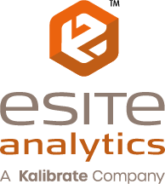Retail trade area analysis is not new. For decades, brands have been using maps and models to predict customer and competitor influences on retail locations.
However, if you were to ask our spatial analysts to name the big trade area analysis mistake they see most often, they wouldn’t hesitate to answer: “failing to factor in changing traffic flows.”
Consider the brick-and-mortar retailer who signs a lease after an in-depth trade area analysis that points to a site based on drive times and radii modeling. Peak times are planned for and marketing campaigns begin, but in the end a major unforeseen roadblock prevents many people from shopping there.
All those prospects the team worked so hard to analyze are driving by without a single glance in their rear-view mirrors.
We can fix that problem. To start, we need to identify what’s wrong:
Why Traditional Retail Trade Areas Are Flawed
A lack of traffic data analysis is one of the biggest causes of unreliable trade area analysis. While drive times can tell you a lot about prospects based on where they live, they don’t reveal location-based factors like geographic barriers and commuting patterns.
And unless a manual count of cars spans a full week at regular intervals throughout the year, it won’t account for changing traffic patterns during peak seasons, days and times.
Using Site Analytics to Address Changing Traffic Patterns
To be successful, your trade area analysis should address the following questions using a GPS data-powered tool. The answers will help you minimize risk, maximize reach and identify opportunities:
- Who’s driving where, and when?
- Where are potential customers to the site coming from at different times of day?
- How does traffic volume change from morning to evening and from weekdays to weekends?
- How does the primary direction of traffic flow change by days, times and seasons?
- Where do potential customers drive throughout the day?
- Who’s behind the wheel and what characteristics predict their shopping behaviors?
- How do driving patterns change by season? For example: Are parents on their way to parks in summer and soccer games in the fall?
- How do driving patterns change by time of day? For example: Are commuters on their ways to work in the morning and running errands at lunch?
Asking these questions before your next trade area analysis, and using GPS data to answer them, means site success way more often!

